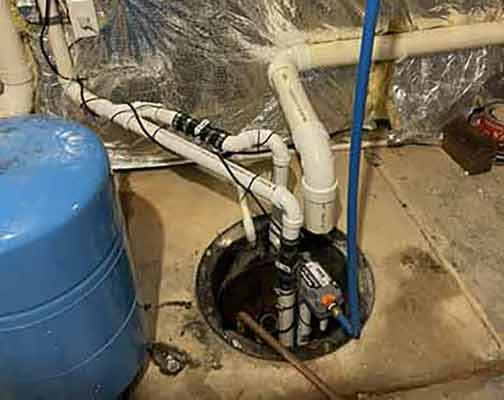
A sump pump is an essential tool for most homeowners who live in areas with high water tables or frequent rainfall. This device helps to keep basements and crawl spaces dry by pumping out excess water before it can cause damage. But like any mechanical device, sump pumps can experience problems over time. Here are ten signs to watch out for that could indicate that your sump pump is in need of repairs.
Strange Noises
One of the most common signs that your sump pump is in trouble is if it starts to make unusual noises while it’s running. If you hear grinding, rattling or humming sounds, it could be a sign that the motor is struggling or that the impeller is damaged. If you notice any strange sounds, turn off the sump pump immediately and call a local plumber to inspect it.
Increased Water Levels
If your sump pump is no longer able to keep up with rising water levels, it’s a clear sign that something is amiss. As water levels rise, the sump pump should activate and start pumping water out of the basement or crawl space. If this isn’t happening, there could be a problem with the pump or the float switch.
Constant Cycling
If your sump pump is constantly turning on and off, it could be a sign that the float switch is malfunctioning. This switch is responsible for turning the pump on and off as water levels rise and fall. If the switch is stuck, broken or out of place, it can cause the pump to cycle on and off excessively.
Foul Smells
If you notice a foul, musty odor coming from your sump pump, it could be a sign that there are mold and mildew growth inside of the pump. This can happen if water is not being adequately removed from the area, allowing mold to grow and spread.
High Humidity Levels
If your basement or crawl space feels excessively humid, even when the sump pump is running correctly, it could be a sign that the pump isn’t removing enough moisture from the area. This could be due to a pump that’s not powerful enough or one that’s not working correctly.
Excessive Vibrations
Sump pumps that vibrate excessively are often experiencing problems with their motor or impeller. This could be due to a worn or damaged part or a blockage in the pump system. If you notice that your sump pump is shaking or vibrating more than usual, it’s time to get it inspected.
Rust and Corrosion
If you notice rust or corrosion on your sump pump, it could be a sign that it’s not properly sealed, allowing water to seep into the internal components. This can cause the pump to corrode from the inside out, leading to malfunctions and eventual failure.
Age
Sump pumps typically have a lifespan of around ten years. If your pump is getting close to this age or is older, it may be time to start thinking about replacing it. Over time, wear and tear can cause parts to break down, leading to malfunctions.
Electrical Issues
If your sump pump is not turning on when it’s supposed to, it could be a sign of an electrical issue. This could be due to a damaged power cord, blown fuse, or other electrical problems. It’s essential to have an electrician inspect the pump to determine the root cause of the issue.
Clogs and Blockages
Finally, if your sump pump isn’t working well, it could be due to a clog or blockage in the pump system. This can be caused by debris, sediment, or other materials building up in the pump or discharge pipe. Regular cleaning and maintenance can help prevent these blockages from occurring.
Conclusion
In conclusion, a sump pump is a critical tool for keeping your basement and crawl space dry. If you notice any of the signs mentioned above, it’s essential to get your pump inspected by a plumber near you. Regular maintenance and inspections can help prevent many of these issues from occurring, ensuring that your sump pump continues to work correctly for years to come.

